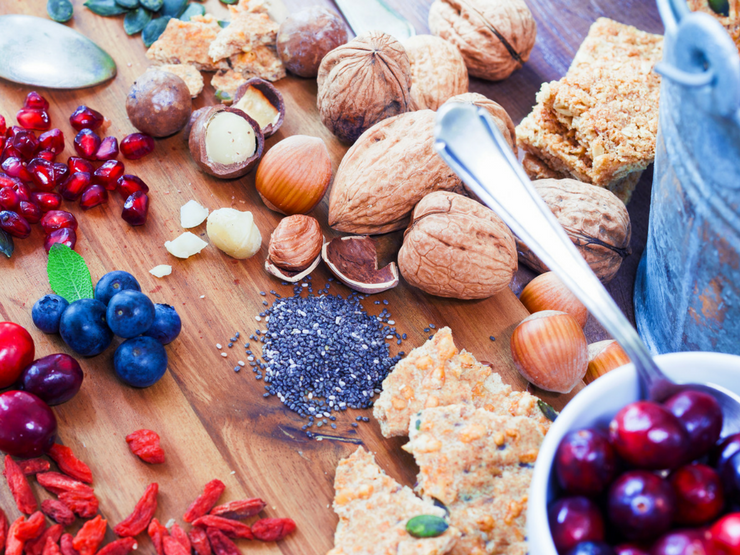Online retail sales growth slowed in May following a fairly strong April


Insight
Superfoods can mean super profits. But which ones are gaining the attention of Australian farmers?

The popularity of superfoods makes them great business for farmers. We give a rundown of those that are filling Australia’s fields now – and possibly in the future.
Superfoods. Whether or not they offer miraculous health benefits, there’s no doubt they promise super growth.
But not all are widely evident in our fields, yet. While the likes of avocados and almonds are particularly popular among Australian growers, the little-known Queen Garnet plum and Chinese jujube are success stories just waiting to happen.
Here’s our list of superfoods – from today’s high achievers to potential champions-in-waiting.

Smashed avo on toast is a cafe tradition in our capital cities and there’s every sign the demand will be met by Australian suppliers – in time. “The growth in avocados is phenomenal,” says Horticulture Australia Research and Development General Manager David Moore.
“You’ve got a lot of people coming out of the mining boom in Western Australia and wanting to enter the avocado industry.”
To do that, however, you need trees and root stock, “but there’s a two-year wait at the moment so it’ll be interesting to see if there’s an oversupply in five or six years.”
 Almonds
AlmondsAlmonds are big business thanks to the popularity of almond milk and the benefits of a daily handful of nuts. Changes on the supply side have also given a boost to Australian growers.
California is the world’s biggest almond producer and exporter, with Australia in a scaled-down second place. However, Moore explains that Australian growers have spied a window of opportunity. “The plantings in California have plateaued and there will be no new plantings [for a while]. Investors saw the opportunity for Australian almonds to take a larger share of the market.”
It’s now all systems go. “A lot of corporates are moving into production,” confirms Moore. “The demand for water and land to grow them is amazing at the moment.”

You can’t overlook the berry phenomenon. And while blueberries lead the charge with their proliferation of antioxidants, the likes of raspberries, blackberries and strawberries are also becoming increasingly popular among consumers and growers.
In recent years, berries have benefited from some amazing technological advancements, says John Harvey, Managing Director of the Rural Industries Research & Development Corporation (RIRDC). These include the use of new substrate systems that allow growers to overcome issues such as depleted and disease-bearing soils. The systems also offer nutrition and water uniformity which has led to exceptional growth rates.
 Jujubes
JujubesA favourite of the Chinese for thousands of years, the jujube fruit (or red date) is eaten fresh, dried or processed, plus used in traditional Chinese medicine. With fresh jujubes containing around 500mg of Vitamin C per 100g of fruit, they are starting to be heralded in the West as an ancient superfood.
In Australia, planting of jujube orchards really only began in 2010. While producers were eyeing the Asian market, local demand has already outstripped supply with Chinese Australians snapping them up. “It’s the second most popular fruit in China and they sell like hot cakes,” says RIRDC Program Manager Duncan Farquhar.
Farquhar believes the jujube will appeal to apple growers. “Its lower water requirement and higher salt tolerance compared to most fruit crops makes it a profitable and practical alternative.”

This fleshy dark plum was accidentally bred by Queensland government scientists a decade ago. Rich in antioxidants, its health benefits around combating obesity are creating worldwide interest. In a 2014 trial study, overweight rats were given the plum’s juice. Not only did they lose weight, their blood pressure, fat levels and liver and heart function were all normalised.
At present, it’s believed there is just one orchard of Queen Garnet plums in Australia, which is expecting to reach full production of 3000 tonnes of fruit by 2020.
 Camel’s milk
Camel’s milkFarquhar notes that at around $20 a litre, camel milk isn’t cheap but, “those who like it, love it”.
Used medicinally for centuries by nomadic people, it has 25 per cent less fat and lactose than cow’s milk with naturally occurring antibacterial and antiviral properties.
While it’s not the only newcomer in the milk space, Farquhar notes that there is room for differentiation in milk. He points to the success of A2 and the prevalence of sheep’s and goat’s milk. It could well be a matter of finding your niche.
© National Australia Bank Limited. ABN 12 004 044 937 AFSL and Australian Credit Licence 230686.